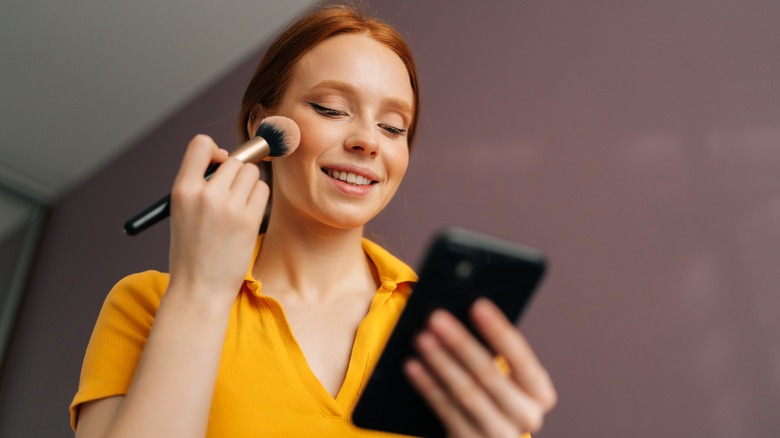Blush is a makeup essential that adds warmth, youthfulness, and a healthy glow to your face. However, applying blush incorrectly can lead to an unnatural or unflattering look. To help you achieve a flawless, radiant finish, here are the top blush mistakes you should definitely avoid!
1. Choosing the Wrong Shade
One of the most common mistakes is selecting a blush color that doesn’t complement your skin tone.
- Fair Skin: Opt for soft pinks, peaches, or light corals.
- Medium Skin: Try warm pinks, rosy mauves, or apricots.
- Dark Skin: Rich berry tones, deep oranges, or terracotta shades work best. Picking the right shade ensures a natural, seamless blend with your complexion.
2. Applying Too Much Product
Overloading your brush with blush can result in a harsh or clownish look. To avoid this:
- Start with a small amount and build up gradually.
- Tap off excess product from your brush before application.
- Use a light hand and blend well for a soft, diffused effect.
3. Incorrect Placement
Blush placement varies based on face shape, and applying it in the wrong area can disrupt the balance of your features.
- Round Faces: Apply blush slightly above the apples of your cheeks and blend towards the temples to create a lifting effect.
- Oval Faces: Lightly sweep blush on the apples of your cheeks for a natural glow.
- Square Faces: Apply blush in a curved motion on the apples of your cheeks to soften angles.
- Heart-Shaped Faces: Focus blush on the lower part of your cheekbones to create balance.
4. Not Blending Properly
Harsh, unblended blush lines can make your makeup look unpolished. Always blend using a fluffy brush or a damp makeup sponge to achieve a natural flush of color.
5. Skipping Primer or Foundation
Blush adheres best to a smooth base. If you have uneven skin texture or discoloration, applying blush directly on bare skin may result in patchiness. Use a light foundation or primer for a more even application.
6. Using the Wrong Formula for Your Skin Type
Blush comes in various formulas, and choosing the wrong one can affect how it looks and lasts.
- Oily Skin: Powder blush works best as it controls shine.
- Dry Skin: Cream or liquid blush provides hydration and a dewy finish.
- Combination Skin: A gel or stain formula offers a long-lasting, natural effect.
7. Ignoring Your Undertone
Your skin’s undertone plays a crucial role in how a blush shade looks on you.
- Cool Undertones: Opt for pink, berry, or cool-toned mauves.
- Warm Undertones: Peach, coral, and warm terracotta shades are ideal.
- Neutral Undertones: You can experiment with both warm and cool shades.
8. Applying Blush Too Low or Too Close to the Nose
Blush applied too close to the nose can make your face appear flushed in an unnatural way. Always place blush slightly away from the center of your face and blend outward.
9. Not Setting Cream or Liquid Blush
If you’re using a cream or liquid blush, setting it with a light dusting of translucent powder can help it last longer and prevent smudging.
10. Overlooking the Importance of Lighting
Applying blush in poor lighting can lead to an uneven or exaggerated look. Always check your makeup in natural light before heading out.
Conclusion
Blush can be a game-changer in your makeup routine when applied correctly. By avoiding these common mistakes, you can achieve a natural, radiant glow that enhances your beauty. Experiment with different techniques, find what works best for your face shape and skin type, and enjoy a flawless blush application every time!













